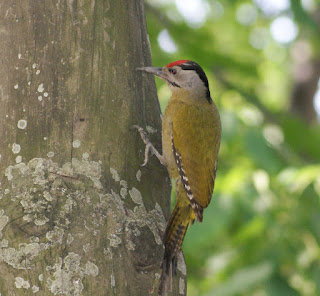 Asian Paradise flycatcher can again be seen dancing like a kite as the spring spreads the wings. The bird is called Dudhraj in Hindi due to milky white colour of its body. The long white tail of the bird looks even more beautiful when it flies in a wavy motion up and down, manoeuvring in the sky to catch insects.The long tail is used to impress the female and may be for balancing the body during frequent changes of direction in flight.
Asian Paradise flycatcher can again be seen dancing like a kite as the spring spreads the wings. The bird is called Dudhraj in Hindi due to milky white colour of its body. The long white tail of the bird looks even more beautiful when it flies in a wavy motion up and down, manoeuvring in the sky to catch insects.The long tail is used to impress the female and may be for balancing the body during frequent changes of direction in flight.
The female on the other hand has
got a short tail and the colour of the body is brown.The sub-adult males resemble the female, but the long tail makes the differentiation easier.
got a short tail and the colour of the body is brown.The sub-adult males resemble the female, but the long tail makes the differentiation easier.
The coming of Asian Paradise flycatcher highlights the struggle for existence among the birds.Being monogamous,both the female and male contribute in nest building,incubation, feeding and guarding the nest against predators.They can be seen scaring away the Yellow Billed Blue-Magpies which are about four times their body size.These birds build a deep cup shaped nest on the branches of trees,preferably in a fork.Many times the nest is built in the vicinity of the nest of Black drongos,which keep the predators away.














